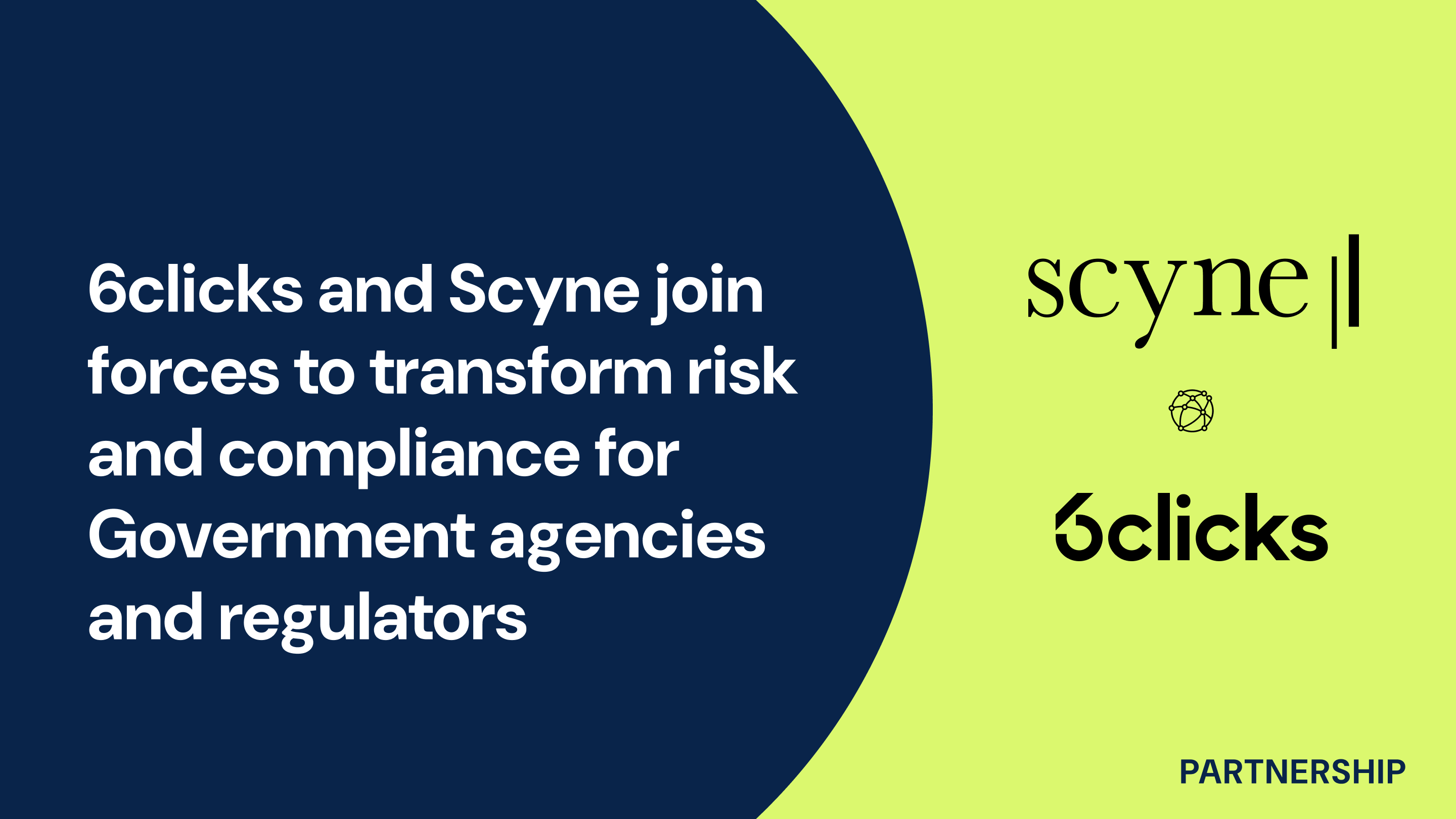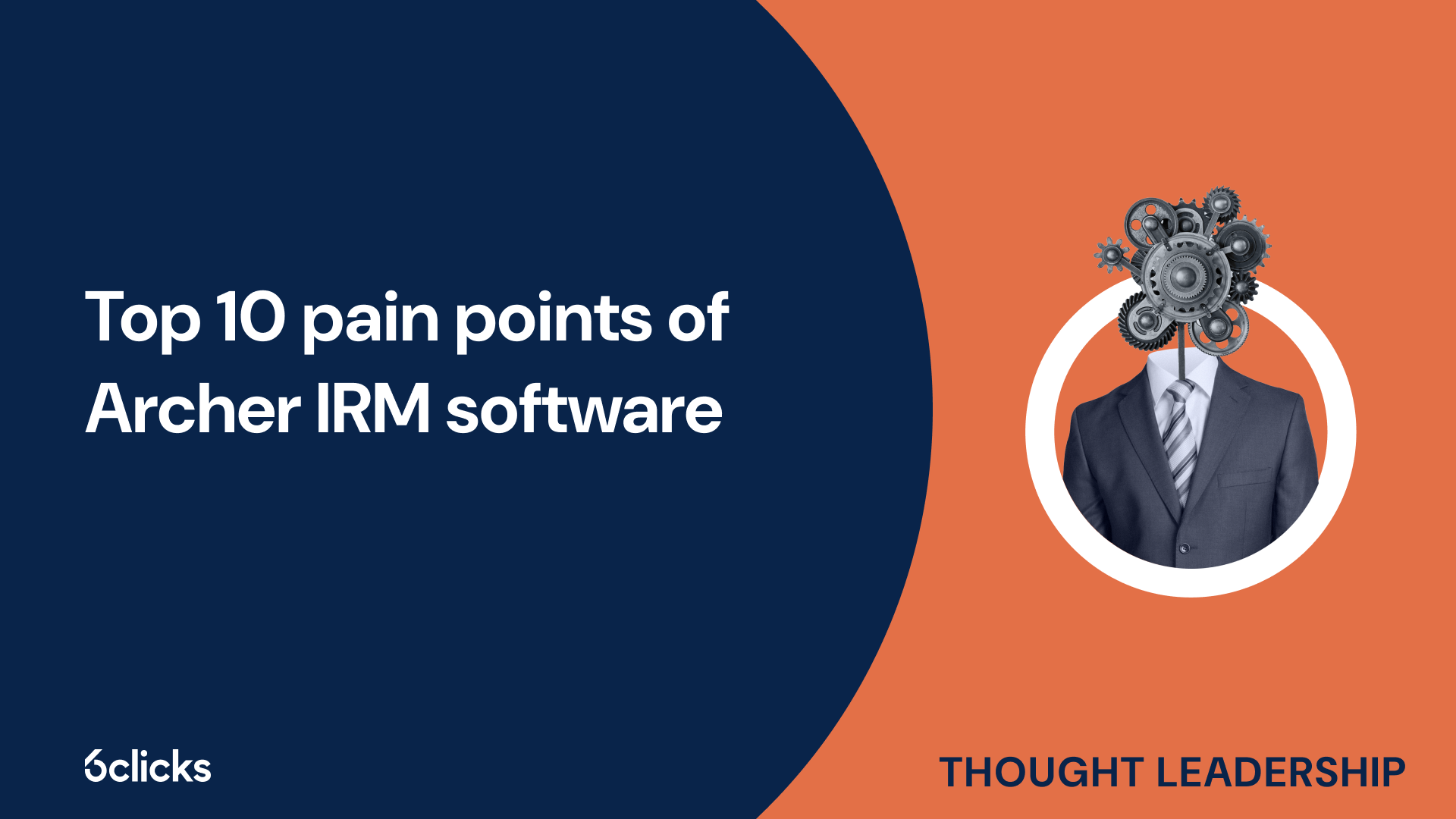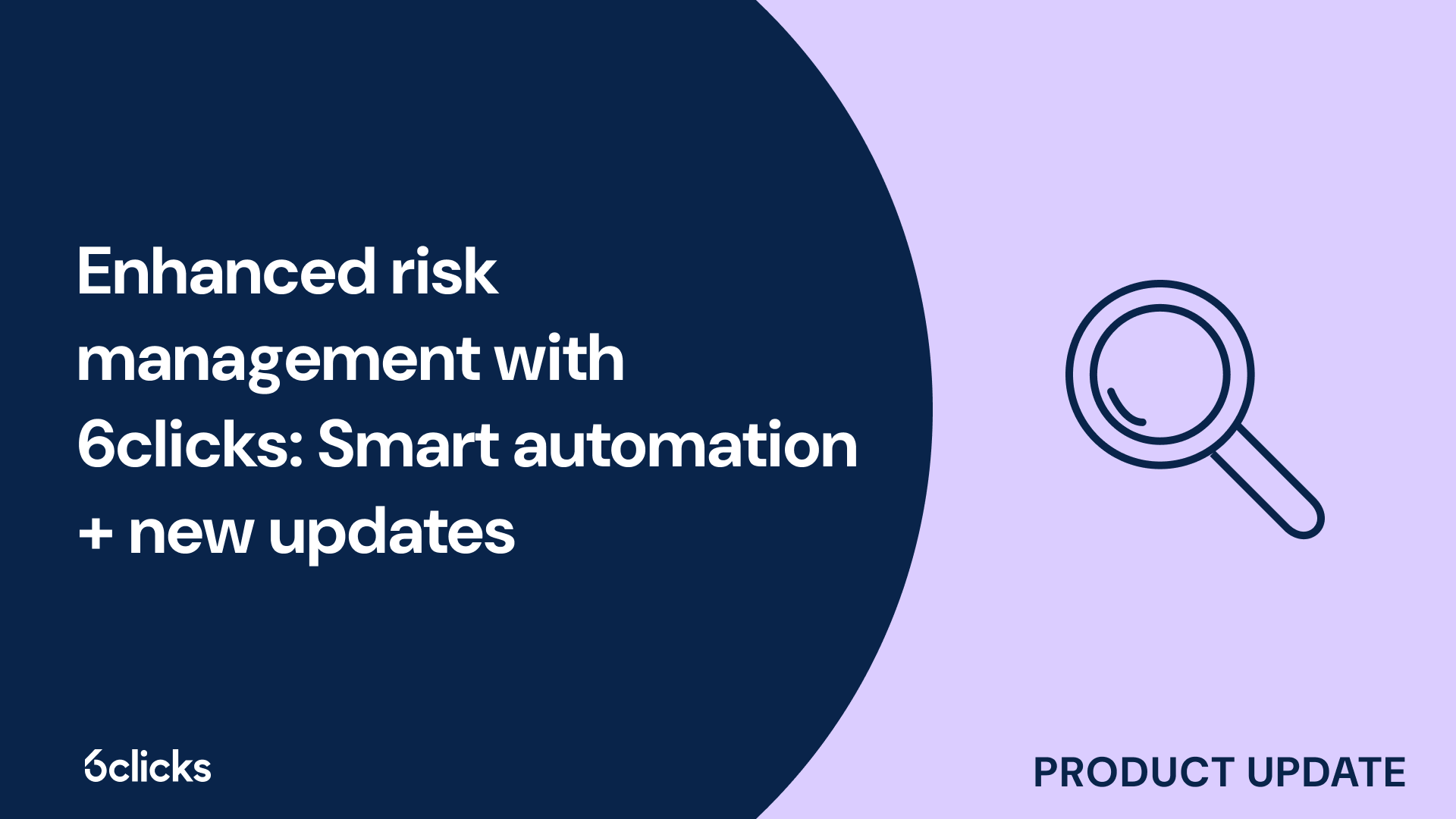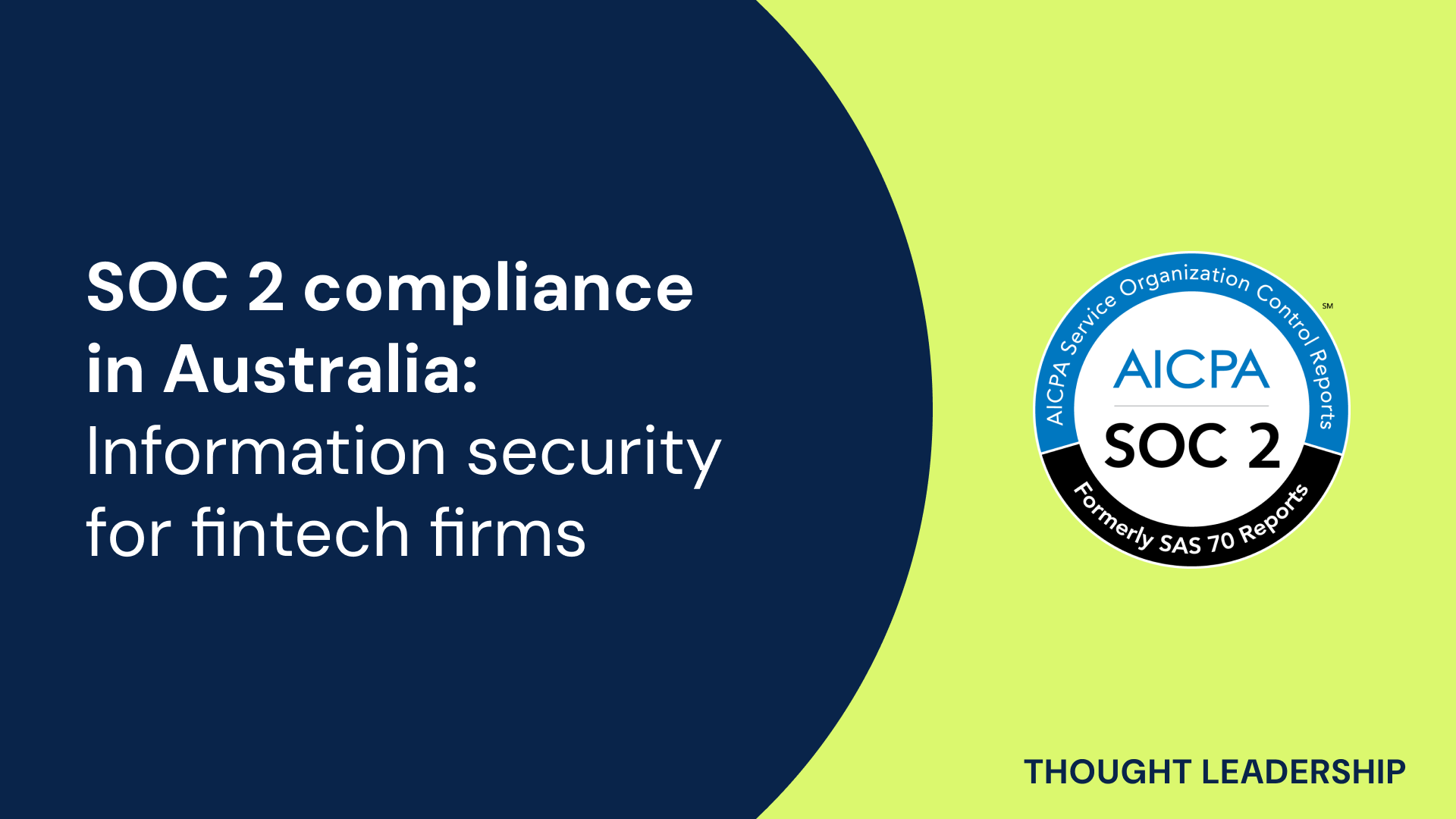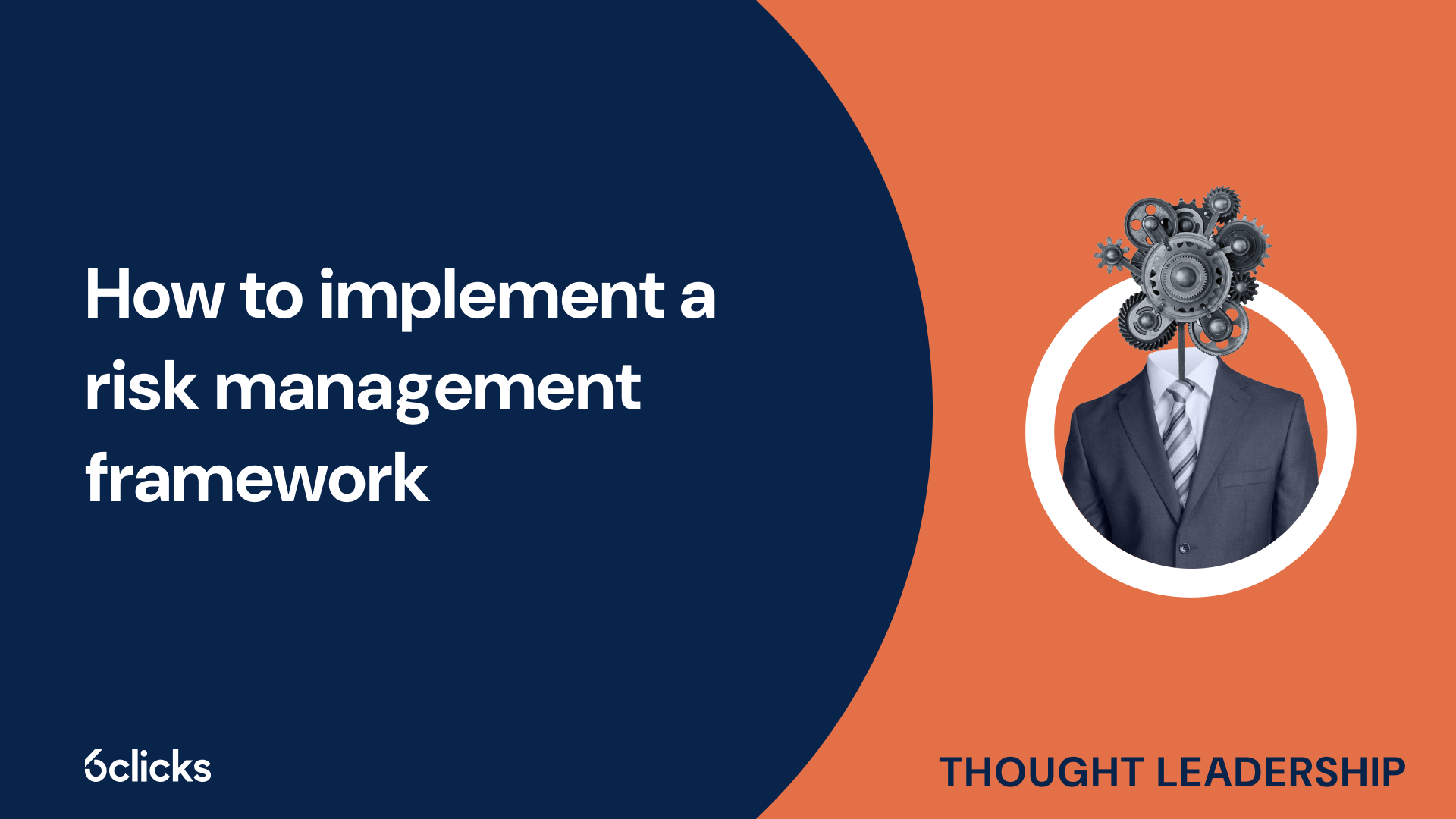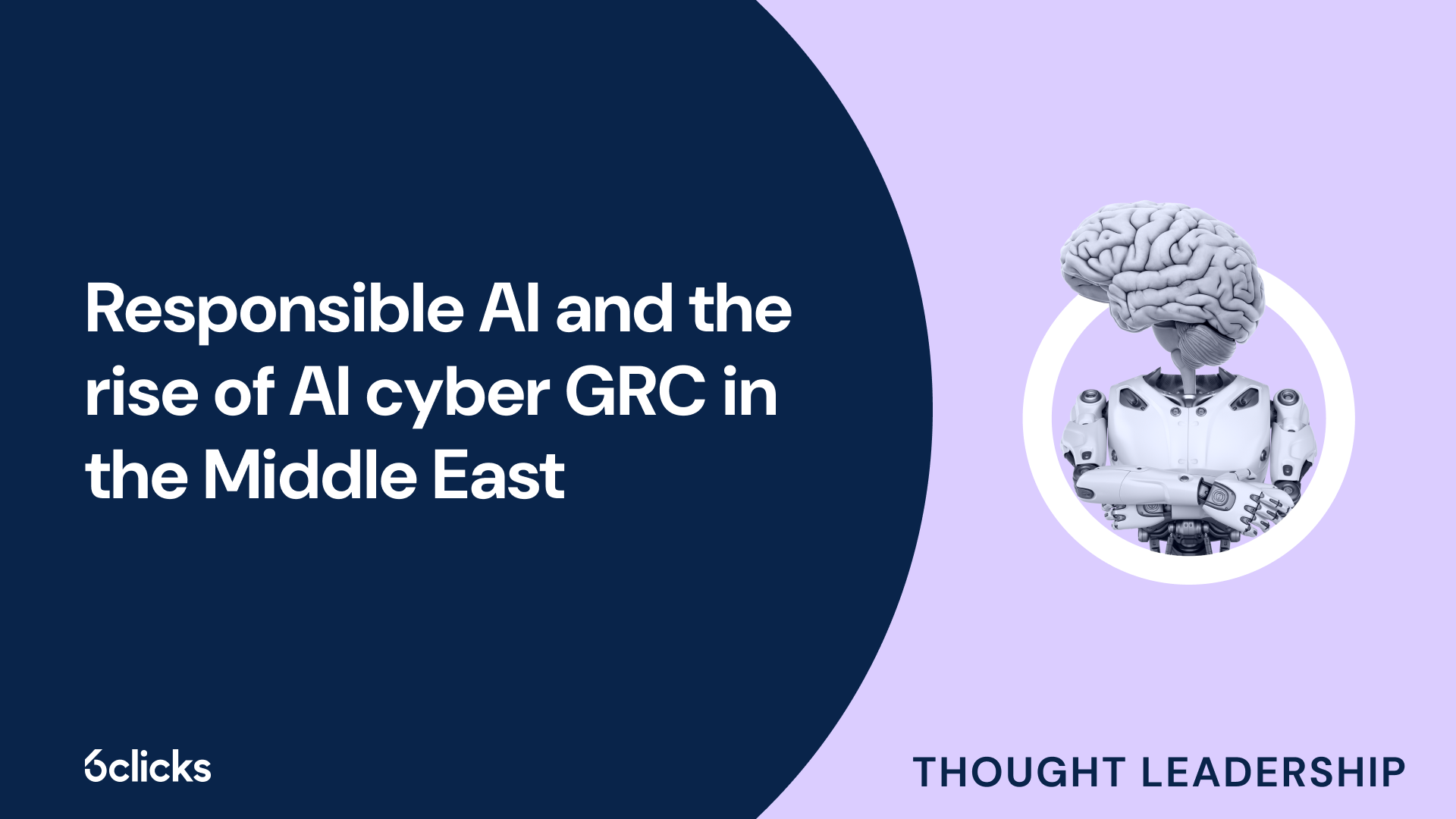The GRC buyer’s guide for 2025: Building resilience with AI-powered, federated solutions
Discover the ultimate GRC buyer's guide for 2025! Uncover how AI-powered, federated solutions transform compliance and security management for industries like government, aerospace, banking, and more. Learn about centralized control, continuous compliance, and advanced cyber GRC capabilities. Download now!
-1.png?width=200&height=249&name=Group%20193%20(1)-1.png)
The GRC buyer’s guide for 2025: Building resilience with AI-powered, federated solutions
-
What is HITRUST?
HITRUST, short for Health Information Trust Alliance, is a leading organization that focuses on ensuring the security, privacy, and compliance of healthcare data. It provides a certifiable framework, known as the HITRUST CSF (Common Security Framework), which is widely recognized and adopted by healthcare organizations, service providers, and business associates. The HITRUST CSF consists of 19 domains, each addressing specific areas of risk management and regulatory compliance within the healthcare industry. These domains cover a wide range of topics, including access control, privacy, security policies, physical security, and mobile device security. By following the HITRUST CSF, healthcare organizations can effectively address their compliance requirements and enhance their overall security posture. HITRUST also offers readiness assessments, certification programs, and comprehensive security management standards to support organizations in their journey towards a robust and healthcare-specific security management program. Through its comprehensive framework and scalable security controls, HITRUST helps healthcare entities meet regulatory factors and protect personal health information from the ever-increasing threat of security breaches.
What are the 19 domains of HITRUST?
HITRUST, also known as the Health Information Trust Alliance, provides a comprehensive framework called the Common Security Framework (CSF) that healthcare organizations can adopt to manage and protect their data effectively. The CSF consists of 19 domains, each addressing a crucial aspect of data protection in the healthcare industry.
- Information Security Management Program: This domain focuses on establishing and maintaining an organization-wide information security program to ensure data protection is a priority.
- Access Control: It is essential to implement controls that protect against unauthorized access and ensure appropriate user access to sensitive information.
- Risk Management: This domain emphasizes identifying and managing risks associated with data privacy and security. Risk assessments play a vital role in this process.
- Security Incident Management: Organizations must establish efficient incident response procedures to promptly identify, report, investigate, and mitigate security incidents.
- Configuration Management: This domain focuses on maintaining accurate inventories of authorized hardware and software while ensuring proper configurations and control processes.
- Cryptographic Controls: Strong encryption mechanisms protect sensitive data, ensuring its confidentiality and integrity.
- Security Policy: Clear and comprehensive security policies dictate an organization's information security requirements and provide guidelines for employees and users.
- Personnel Security: Human factors play a crucial role in data protection, and this domain facilitates the implementation of appropriate security measures for personnel, including background checks and awareness training.
- Physical and Environmental Protection: This domain emphasizes securing physical facilities, providing safeguards against unauthorized access, safeguarding information media, and addressing environmental considerations like power, cooling, and fire protection.
- Security Awareness and Training: Educating employees and stakeholders about data protection and security measures is crucial for maintaining a secure environment.
- Incident Response: Efficient incident response protocols should be developed, enabling organizations to respond promptly and effectively to potential security incidents.
- Business Continuity and Disaster Recovery Planning: Ensuring the availability and integrity of critical systems and data during and after an incident is essential. This domain focuses on developing and testing business continuity and disaster recovery plans.
- Third-Party Assurance: Organizations must establish processes to manage, assess, and monitor the security of affiliated third parties and service providers handling sensitive data.
- Audit and Accountability: This domain emphasizes the implementation of appropriate audit mechanisms to maintain accountability and transparency in data access and usage.
- Network Protection: Ensuring secure network architecture, including robust firewalls, intrusion prevention systems, and network segmentation, is crucial to protect against unauthorized access and data breaches.
- Data Protection and Privacy: Protecting personal health information and ensuring compliance with relevant data protection and privacy regulations is essential in the healthcare industry.
- Systems and Communications Protection: This domain focuses on securing systems and communication channels, including endpoint protection, encryption, and secure coding practices.
- Incident Response and Management: Establishing formal incident response processes and guidelines enables organizations to respond to security incidents in a coordinated and effective manner.
- Configuration Management and Vulnerability Management: This domain involves establishing controls to manage vulnerabilities, including regular patching, vulnerability scanning, and remediation processes.
Implementing these 19 domains of the HITRUST CSF provides healthcare organizations with a comprehensive framework to assess and enhance their data protection and security controls. By following these guidelines, organizations can establish a robust security management program, ensure compliance with regulatory requirements, and mitigate the risk of security breaches and data loss.
Domain 1: risk management & compliance
In the complex and ever-changing landscape of the healthcare industry, risk management and compliance are of utmost importance. This domain of the HITRUST CSF focuses on identifying and managing risks associated with data privacy and security, as well as meeting regulatory requirements. Healthcare organizations must conduct thorough risk assessments to identify potential vulnerabilities and develop strategies to mitigate them effectively. By implementing comprehensive risk management processes and compliance programs, organizations can ensure that they are proactively addressing regulatory factors and protecting sensitive data. This domain encompasses activities such as risk assessment, risk analysis, risk treatment, regulatory compliance management, and risk monitoring. With these measures in place, organizations can establish a solid foundation for their security management program and consistently meet the necessary compliance requirements. Effective risk management and compliance efforts are integral to maintaining the confidentiality, integrity, and availability of critical healthcare information.
Challenges of managing risks & complying with regulations
Managing risks and complying with regulations are critical aspects of any organization's operations, but they come with their own set of challenges. One of the main challenges is the complexity of regulatory requirements that organizations must adhere to. Regulatory bodies often have varying and evolving standards, making it difficult for organizations to keep up and ensure compliance.
Another challenge is the diversity of organization types within the healthcare industry. Each organization operates under different regulatory frameworks, which can be overwhelming to navigate and align with. Additionally, healthcare organizations are not the only ones involved in the process. Business associates and service providers also play a significant role, further complicating the compliance landscape.
Furthermore, organizations often struggle with the resources required for efficient risk management and compliance. Conducting comprehensive risk assessments and implementing necessary security controls can be time-consuming and costly. The need for continuous monitoring, assessments, and adjustments adds to the overall complexity.
These challenges impact the effectiveness of an organization's risk management program. Non-compliance with regulations can lead to penalties, legal liabilities, and damage to an organization's reputation. Ineffective risk management can result in security breaches, data theft, and financial losses.
To overcome these challenges, organizations can leverage frameworks like the HITRUST CSF (Certifiable Framework) to achieve comprehensive and scalable security. The HITRUST CSF combines various regulatory factors and security controls into 19 domains, covering areas such as access control, privacy framework, and mobile device security. Implementing a structured risk management program under the HITRUST CSF can help organizations address compliance requirements efficiently and enhance their overall security posture.
The role of the HITRUST CSF in risk management & compliance
The HITRUST CSF (Common Security Framework) plays a crucial role in risk management and compliance within the healthcare industry. Developed by the Health Information Trust Alliance (HITRUST), the CSF is a certifiable framework that provides comprehensive guidance for organizations to meet regulatory requirements and effectively manage risks.
One of the key benefits of the HITRUST CSF is its ability to streamline the certification process. By incorporating various regulatory factors and security controls into a single framework, it simplifies the compliance requirements for healthcare organizations. This allows them to efficiently implement security controls and demonstrate compliance to auditors and regulators.
The HITRUST CSF also assists organizations in assessing their risk profile and developing a mature security management program. With its 19 control domains, encompassing areas such as access control, mobile device security, and physical security, the CSF provides a scalable set of security controls that can be tailored to the organization's specific needs. This enables organizations to proactively identify and address vulnerabilities, reducing the likelihood of security breaches and data theft.
In addition, the HITRUST CSF emphasizes the importance of protecting personal health information. With the increasing digitization of healthcare, safeguarding patient data has become crucial. The CSF assists organizations in implementing healthcare-specific security practices and standards, ensuring the privacy and security of personal health information.
Domain 2: access control
Access Control is one of the 19 domains of the HITRUST CSF. This domain focuses on ensuring that only authorized individuals have access to sensitive information and resources within healthcare organizations. It encompasses various aspects, including user identification and authentication, password management, and account provisioning and deprovisioning. By implementing strong access controls, organizations can prevent unauthorized access, reduce the risk of data breaches, and protect the privacy and integrity of patient information. The HITRUST CSF provides guidance and requirements for implementing effective access control mechanisms, helping organizations establish robust security measures that align with regulatory requirements and industry best practices. With access control as a key component of the HITRUST CSF, healthcare organizations can confidently manage user access, maintain compliance, and secure their systems and data.
Types of access controls used by organizations
Access control is a critical component of any organization's security management program, especially in the healthcare industry where protecting sensitive patient information is of utmost importance. Various compliance frameworks, including PCI DSS, HIPAA, SOC 2, and ISO 27001, emphasize the need for robust access control measures to ensure the confidentiality, integrity, and availability of data.
Physical access controls are designed to restrict entry to authorized personnel and areas within an organization. This can include measures such as locked doors, security guards, and biometric systems that require fingerprint or iris scans for identification.
Electronic access controls, on the other hand, focus on managing and granting access to digital systems and networks. This can involve the use of usernames and passwords, two-factor authentication, and access control lists that define what resources an individual can access based on their role or privileges.
Two-factor authentication adds an extra layer of security by requiring users to provide two pieces of evidence for verification, such as a password and a unique code received on a mobile device.
Data encryption is also crucial in access control. It ensures that sensitive information is protected by encoding it in a way that can only be deciphered by authorized parties with the proper decryption key.
The role of the HITRUST CSF in access control
The HITRUST CSF (Common Security Framework) plays a crucial role in access control for healthcare organizations and their business associates. This comprehensive framework provides guidelines and requirements for implementing various forms of access control to protect sensitive data.
The HITRUST CSF addresses all domains of security, including access control, as part of its certification process. It provides organizations with a certifiable framework that aligns with regulatory requirements and industry standards. This ensures that healthcare organizations and their business associates have a robust access control system in place to safeguard sensitive data.
The HITRUST CSF considers the unique needs and challenges of the healthcare industry, taking into account the privacy and security requirements for protecting personal health information. It provides a scalable approach to access control, allowing organizations to tailor their security posture based on their risk assessment and organization type.
Furthermore, the HITRUST CSF aligns with industry standards such as PCI DSS, HIPAA, SOC 2, and ISO 27001. By incorporating these standards, healthcare organizations and their business associates can ensure their access control practices meet the compliance requirements set forth by regulatory factors.
Domain 3: business associate management
Business associates play a critical role in the healthcare industry, handling sensitive data on behalf of healthcare organizations. Domain 3 of the HITRUST CSF focuses on ensuring the appropriate management of these business associates to mitigate potential risks and maintain compliance with regulatory requirements. This domain covers various aspects such as vendor selection, contract management, and ongoing oversight of business associates. It emphasizes the need for healthcare organizations to thoroughly evaluate and monitor their business associates' security practices and provide clear expectations in their contractual agreements. By implementing effective business associate management processes, organizations can enhance their overall security posture and reduce the risk of data breaches or non-compliance. The HITRUST CSF offers a comprehensive framework and specific control requirements to guide healthcare organizations in managing their business associates effectively. By adhering to these guidelines, organizations can strengthen their relationships with business associates and ensure the secure handling of sensitive patient data.
Requirements for business associates
Business associates play a crucial role in the healthcare industry and are subject to specific requirements under HITRUST CSF. HITRUST CSF (Common Security Framework) is a certifiable framework designed to help organizations manage risk and meet regulatory compliance requirements.
The requirements for business associates under HITRUST CSF are aimed at ensuring that these organizations comply with the necessary security controls and safeguard the confidentiality, integrity, and availability of protected health information (PHI). Business associates are required to implement appropriate security controls and practices to protect PHI and mitigate risk. They must also conduct regular risk assessments and develop risk management plans to address any identified vulnerabilities or threats.
HITRUST CSF assists organizations in managing business associate relationships through its comprehensive framework and set of controls. The framework provides organizations with a scalable and efficient approach to evaluating, selecting, and managing business associates. It includes specific control domains and control specifications that help organizations assess the security posture and compliance of their business associates.
When evaluating and selecting business associates, organizations need to consider several key factors. These include assessing the business associate's ability to meet the necessary compliance requirements, their experience and expertise in the healthcare industry, their security management program and standards, and their track record with previous clients. Additionally, organizations should evaluate the business associate's maturity levels, control baselines, and their adherence to HITRUST CSF requirements.
By adhering to the requirements for business associates and leveraging the HITRUST CSF framework, healthcare organizations can effectively manage their relationships while ensuring the security and compliance of PHI.
The role of the HITRUST CSF in business associate management
The HITRUST CSF plays a crucial role in business associate management by providing organizations with a comprehensive framework and set of requirements to ensure the security and compliance of their business associates. The CSF outlines the necessary security controls and practices that business associates must implement to protect protected health information (PHI) and mitigate risk.
Business associates are required to comply with the specific control domains and control specifications outlined in the HITRUST CSF. These requirements focus on safeguarding the confidentiality, integrity, and availability of PHI. By adhering to the CSF, business associates can demonstrate their commitment to maintaining a robust security posture.
In managing their business associates, organizations can leverage the HITRUST CSF to evaluate and select appropriate partners. The CSF offers a scalable and efficient approach to assessing the security posture and compliance of business associates. Organizations can consider factors such as the business associate's ability to meet compliance requirements, their experience in the healthcare industry, and their track record with previous clients when evaluating potential partners.
By utilizing the HITRUST CSF, organizations can effectively manage their business associates and ensure that these partners meet the necessary security and compliance standards in protecting PHI.
Domain 4: audit logging & system activity monitoring
Proper audit logging and system activity monitoring are critical components of an effective security management program in the healthcare industry. In this domain, organizations are required to implement measures to capture and track system and user activities to detect and respond to potential security incidents. HITRUST CSF provides specific control specifications to ensure that organizations have robust audit logging and system activity monitoring practices in place. This includes requirements such as defining audit log settings, conducting regular log reviews, and implementing real-time monitoring tools to alert for suspicious activities. By adhering to these requirements, organizations can enhance their ability to identify and mitigate security risks, ensuring the confidentiality, integrity, and availability of sensitive health information. Additionally, organizations can demonstrate their commitment to sound security practices and regulatory compliance by effectively implementing audit logging and system activity monitoring controls.
Challenges to auditing logs and system activity monitoring
Auditing logs and monitoring system activity are crucial components of maintaining a robust security posture in the healthcare industry. However, these tasks present unique challenges when it comes to achieving compliance with the HITRUST framework.
One of the main challenges is the sheer volume of logs generated by various systems and applications within healthcare organizations. Auditors face the daunting task of sifting through huge amounts of data to identify any suspicious activities or potential security breaches. This requires advanced tools and technologies capable of efficiently analyzing and correlating log data.
Additionally, the complexity of healthcare environments and the diversity of systems and services make it difficult to establish a centralized logging and monitoring infrastructure. Different types of devices, platforms, and protocols may be in use, making it challenging to ensure comprehensive visibility and monitoring across the entire network.
Thorough documentation is vital in overcoming these challenges. It involves creating and maintaining detailed records of controls, policies, and audit reports. This includes documenting specific log types, sources, and retention periods, as well as defining responsibilities for log management and monitoring.
Furthermore, effective auditing requires auditors to actively gather evidence, verify controls, and prepare audit reports. They must have a deep understanding of HITRUST requirements and be skilled in using various tools and techniques to audit logs and system activity. Auditors play a critical role in assessing an organization's security posture and identifying areas for improvement.
The role of the HITRUST CSF in audit logging and system activity monitoring
The HITRUST CSF (Common Security Framework) plays a crucial role in audit logging and system activity monitoring within the healthcare industry. It provides organizations with a comprehensive framework that helps them establish and maintain a robust security posture.
Audit logging and system activity monitoring are essential components of the HITRUST framework, as they contribute to ensuring compliance with regulatory requirements and industry best practices. They help organizations identify potential security breaches, monitor system behaviors, and detect any suspicious activities.
One of the key challenges faced by organizations in auditing logs and monitoring system activity is the sheer volume of data generated by various systems and applications. The HITRUST CSF addresses this challenge by providing guidance on efficient approaches to analyze and correlate log data.
Another challenge is the complexity and diversity of healthcare environments, which make it difficult to establish a centralized logging and monitoring infrastructure. The HITRUST CSF provides organizations with control specifications and guidance on how to achieve comprehensive visibility and monitoring across their entire network, regardless of the types of devices, platforms, or protocols in use.
Furthermore, the HITRUST CSF emphasizes the importance of thorough documentation in auditing logs and monitoring system activity. It provides organizations with requirement statements and control baselines to ensure proper documentation of controls, policies, audit reports, and responsibilities for log management and monitoring.
Domain 5: data security & privacy framework
Domain 5 of the HITRUST framework focuses on data security and privacy, providing guidelines and controls to enable secure sharing of sensitive data, protect networks through internal security measures, and ensure compliance with privacy protocols.
One of the key objectives of this domain is to establish a data security framework that safeguards the confidentiality, integrity, and availability of sensitive information. HITRUST emphasizes the use of encryption, access controls, and authentication mechanisms to protect data both at rest and in transit. By implementing these security measures, organizations can mitigate the risk of unauthorized access and ensure that sensitive data remains secure.
Another aspect of Domain 5 is the protection of networks through internal security measures. HITRUST provides guidance on network segmentation, network monitoring and intrusion detection systems, and secure configuration management to protect against network breaches and unauthorized activities. These controls enable organizations to minimize the potential impact of security incidents and maintain the integrity of their networks.
Furthermore, HITRUST emphasizes the importance of compliance with privacy protocols. This includes adherence to applicable laws and regulations related to data privacy, such as the Health Insurance Portability and Accountability Act (HIPAA) in the healthcare industry. By following these protocols, organizations can establish a strong privacy framework that protects individuals' personal health information and ensures compliance with regulatory requirements.



